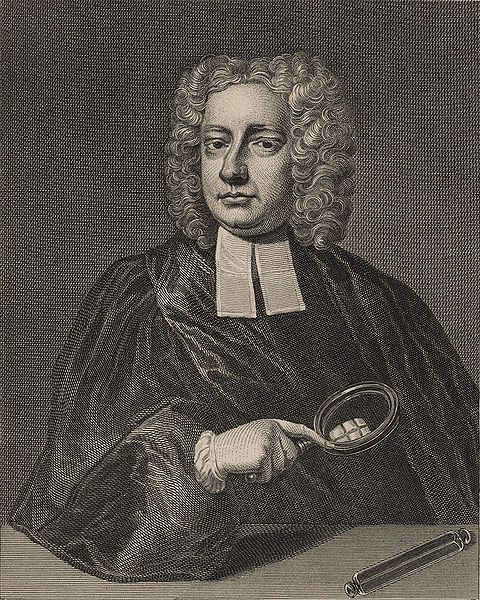<Back to Index>
- Natural Philosopher John Theophilus Desaguliers, 1683
- Architect Karl Friedrich Schinkel, 1781
- Prime Minister of the United Kingdom Charles Grey, 2nd Earl Grey, 1764

John Theophilus Desaguliers (13 March 1683 – 29 February 1744) was a natural philosopher born in France. He was a member of the Royal Society of London beginning 29 July 1714. He was presented with the Royal Society's highest honour, the Copley Medal, in 1734, 1736 and 1741, the 1741 award being for his "discovery of the properties of Electricity". He studied at Oxford, became experimental assistant to Sir Isaac Newton, and later popularized Newtonian theories and their practical applications. He has been credited as the inventor of the planetarium, on the basis of some plans he published.
Born in La Rochelle, Desaguliers was an immigrant to England from France. He was born into a Huguenot (Protestant) family and fled to England at the age of 11 (1694) to escape the consequences of the Revocation of the Edict of Nantes. He was educated at Christ Church, Oxford, and succeeded John Keill in reading lectures on experimental philosophy at Hart Hall. He was the first who introduced the reading of lectures in London, where he had for his auditors not only the learned and the great, but also George I and George II and the royal family. In 1714, he was chosen a member of the Royal Society, to whose Transactions he communicated some valuable papers. In 1718, he completed his degrees at Oxford as bachelor and doctor of laws. Desaguliers' reputation as a scientist was sealed not only by his three awards from the Royal Society, but also by publication of a two volume work entitled A Course of Experimental Philosophy. Publication of the first volume coincided with the year he first received the Copley Medal (1734), while the second volume's publication came 10 years later in 1744, the year of his death. The first volume concerns theoretical and practical mechanics with an explanation of the basics of Newtonian physics. The second volume contains material oriented toward practical application of scientific findings.
An inventor as well as a scientist, Desaguliers improved upon the steam engine design of Thomas Savery through the addition of a safety valve. He also designed methods for heating liquid boilers with steam rather than fire, presumably increasing their safety significantly.
Additionally, Desaguliers was a Freemason, elected as the third Grand Master in 1719, Deputy Grand Master in 1723 and 1725 of the newly formed Premier Grand Lodge of England. Desaguliers was also a priest in the Church of England. Through the patronage of James Brydges, 1st Duke of Chandos, he was nominated in 1714 to the living of St Lawrence's church, Little Stanmore (sometimes called Stanmore Parva, or Whitchurch), then in Middlesex.
His duties as a parish priest were combined with being chaplain to the
Duke, as St Lawrence's church was at the edge of the duke's estate, Canons Park. The church was rebuilt in the baroque style in 1715. As the chapel at Cannons was not completed until 1720, the church was the location of first performances of the so-called Chandos Anthems by George Frideric Handel, who was in 1717/18, like Desaguliers, a member of the Duke's household. The
Canons estate benefited from Desaguliers' scientific expertise which
was applied to the elaborate water garden there. He also was technical
adviser to an enterprise in which Chandos had invested, the York Buildings Company, which used steam-power to extract water from the Thames. In 1718 Desaguliers dedicated to the Duke his translation of Edme Mariotte's treatise on the motion of water. Desaguliers
appears to have been distracted from his parochial duties by his other
interests, and the Duke complained that there were unreasonable delays
in burying the dead. However, despite falling out with his patron,
Desaguliers retained the living until his death.
On
14 October 1712 he married Joanna Pudsey, daughter of William and Anne
Pudsey of Kidlington, near Oxford. They had four sons and three
daughters, for most of whom they acquired aristocratic godparents, but
only two children survived beyond infancy: John Theophilus (1718–1751)
graduated from Oxford, became a clergyman, and died childless, while
Thomas Desaguliers (1721–1780) led a distinguished scientific military
career. On 1 April 1748 he became chief firemaster at the Arsenal,
Woolwich, a post which he held until the end of his life, and seems to
have been the first to be employed by the English army to apply
scientific principles to the production of cannon and the powers of
gunnery. It was Thomas Desaguliers who designed and supervised the fireworks for the first performance of Handel's Music for the Royal Fireworks in Green Park.